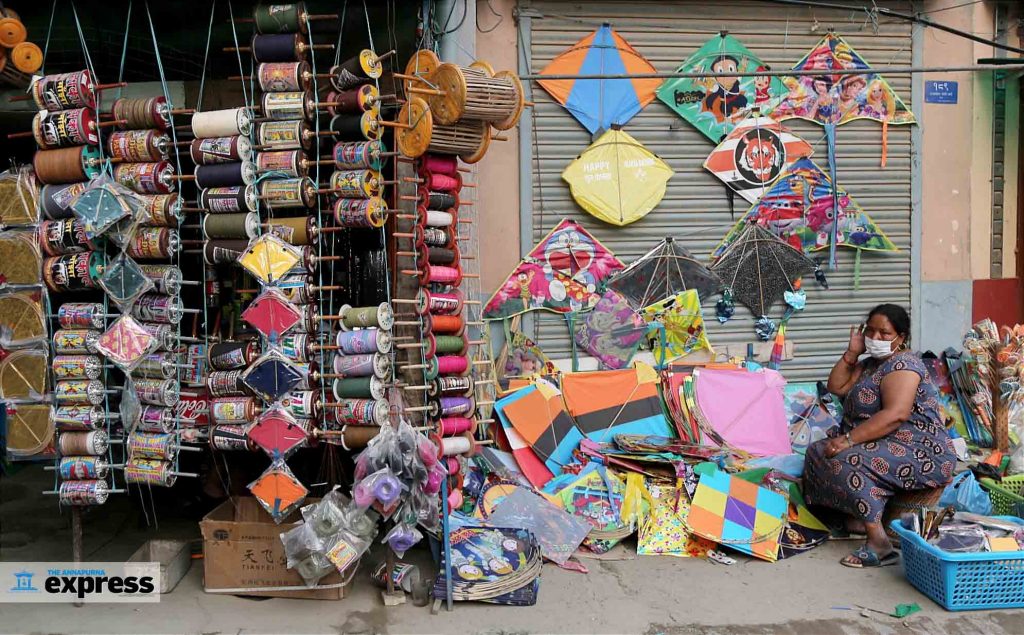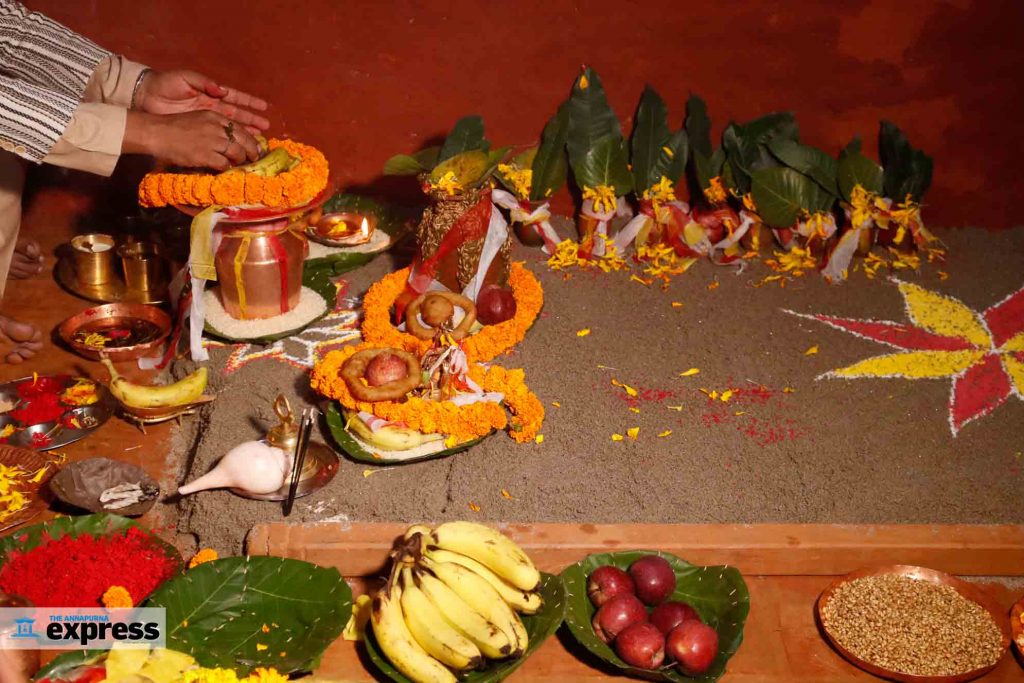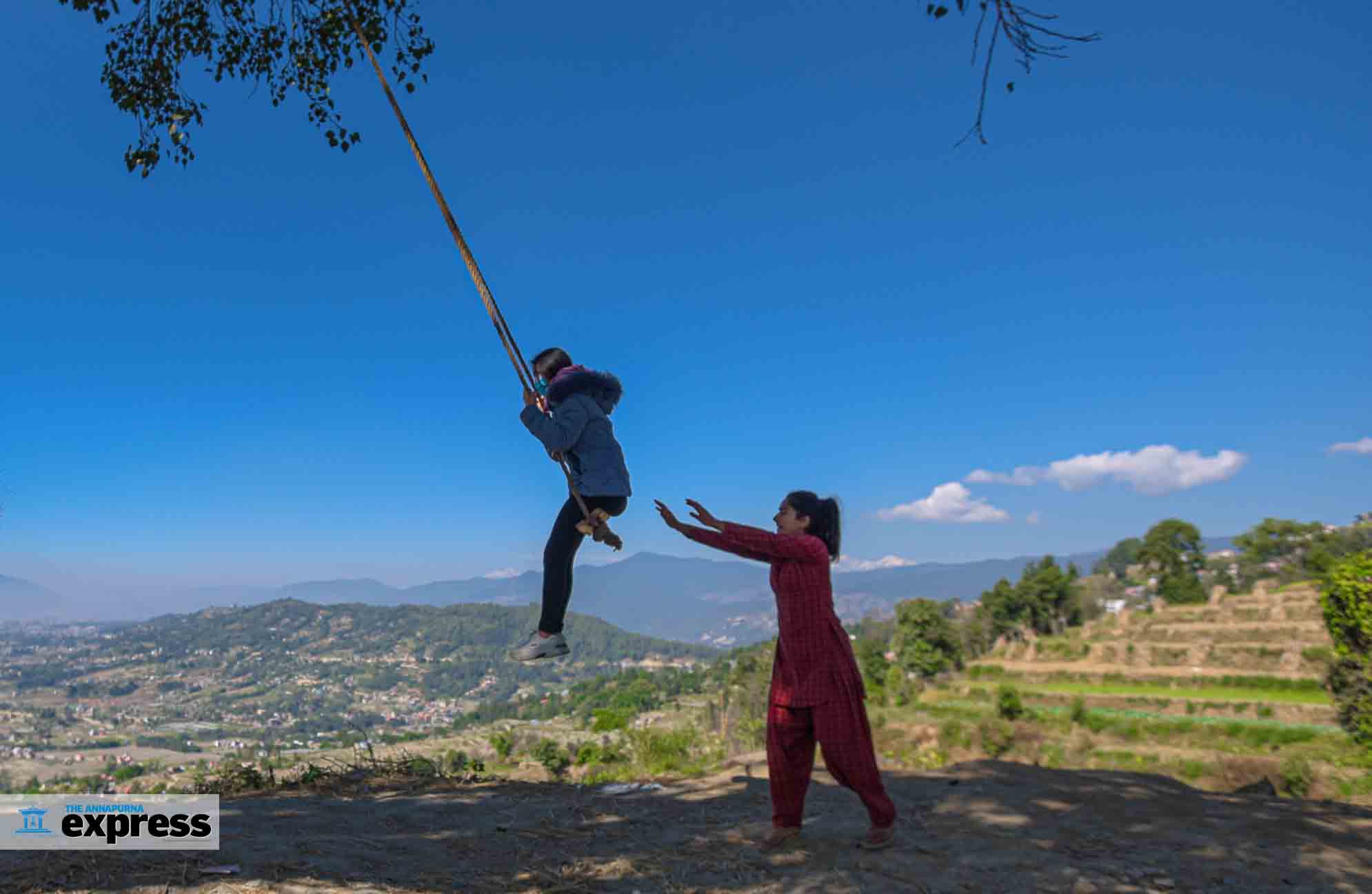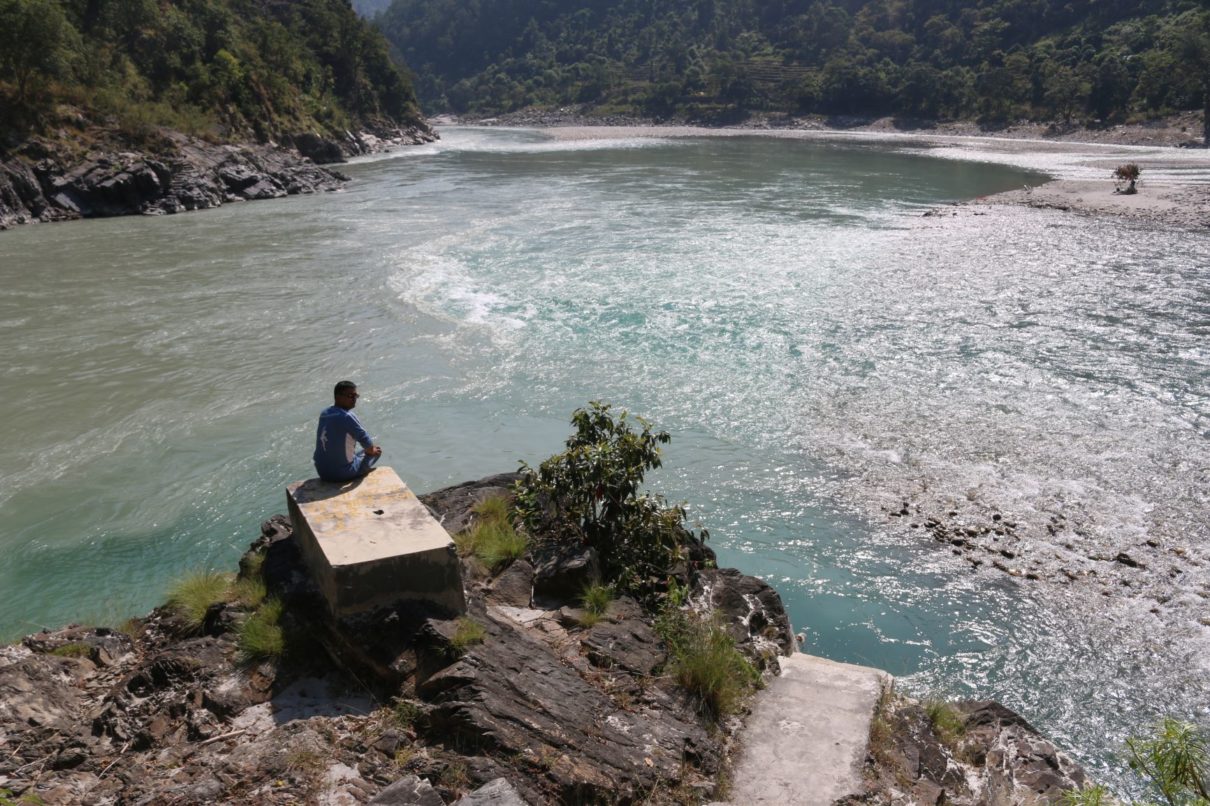Dashain is here. You can feel it. Mornings are pleasantly warm and everything suddenly looks sharply focused. More tellingly, shopping areas are crowded, there are more vehicles on the roads and kites in the sky. 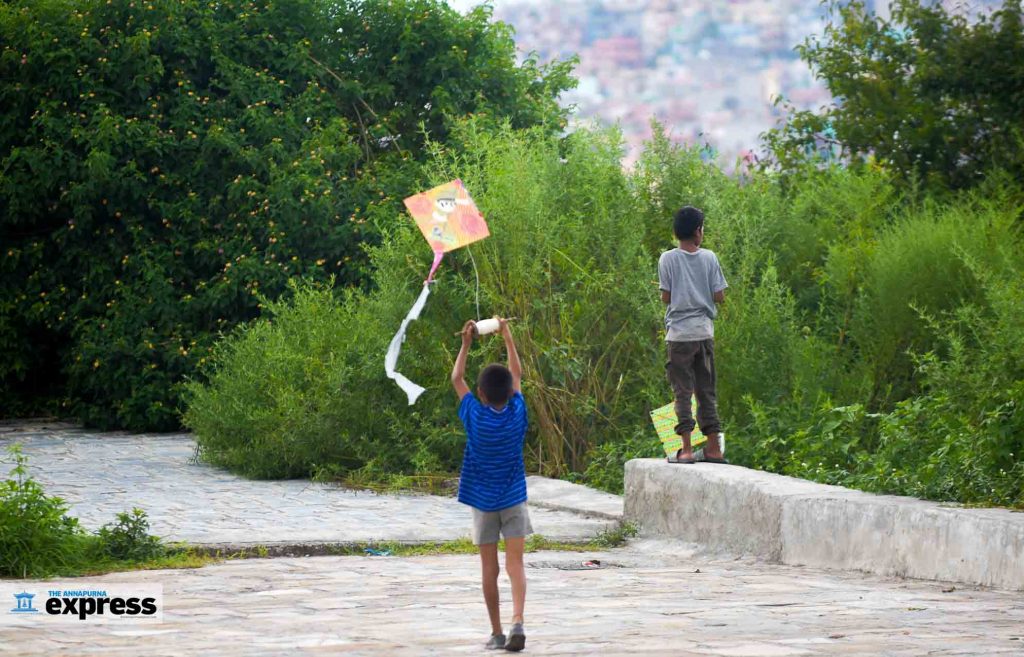 Bus ticket counters are packed with people trying to get hold of tickets so that they could travel home in time for the big festival, while in the outskirts of Kathmandu Valley, traditional swings are being erected.
Bus ticket counters are packed with people trying to get hold of tickets so that they could travel home in time for the big festival, while in the outskirts of Kathmandu Valley, traditional swings are being erected.  This week, I turned my lens to all things that represent the greatest festival of Nepali Hindus.
This week, I turned my lens to all things that represent the greatest festival of Nepali Hindus. 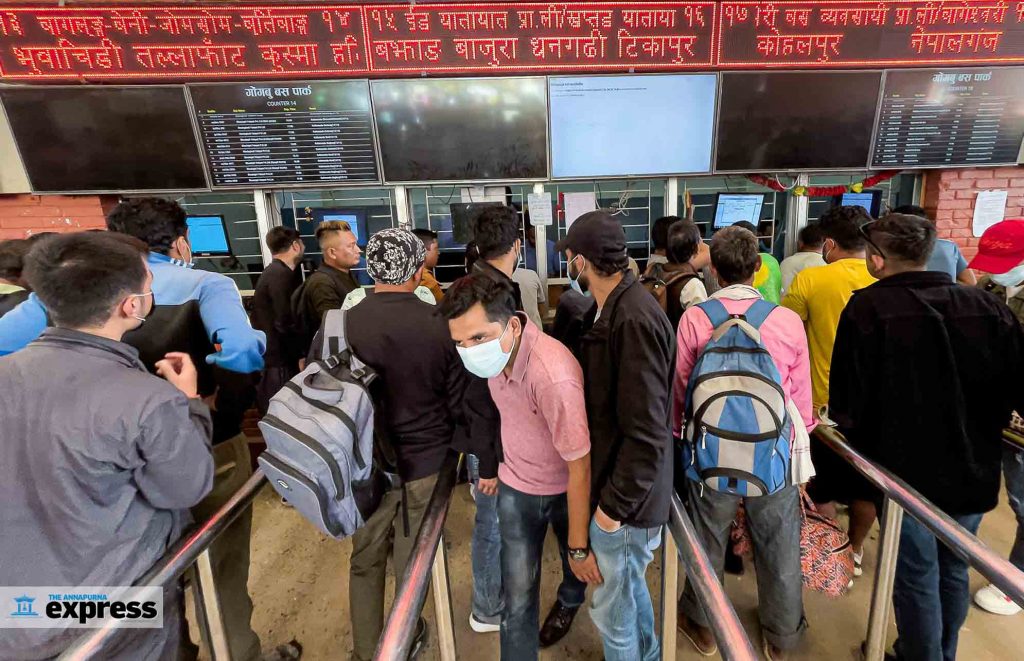 The 10-day festival kicked off with Ghatasthapana (Sept 26). The day is observed by planting of barley seeds, whose sprouts are used as a blessing of goddess Durga on the day of Bijaya Dashami.
The 10-day festival kicked off with Ghatasthapana (Sept 26). The day is observed by planting of barley seeds, whose sprouts are used as a blessing of goddess Durga on the day of Bijaya Dashami. 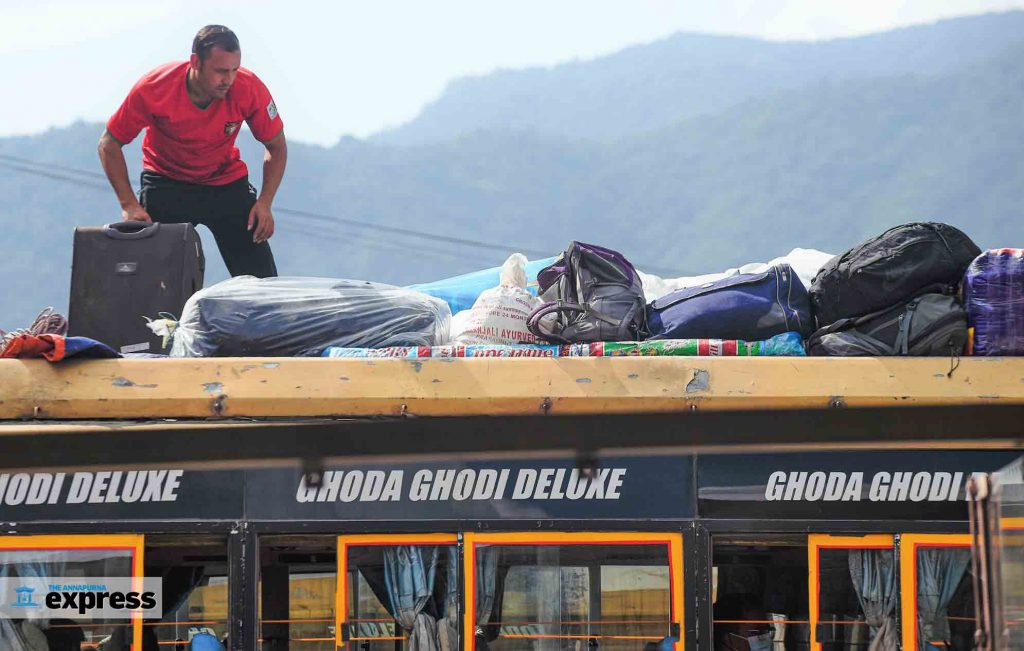 Dashain is a festival celebrating the victory of good over evil. According to the Hindu mythology, goddess Durga had slayed demon Mahishasura in a battle that lasted for 10 days. The first nine days symbolizes the battle which took place between the different manifestations of Durga and Mahishasura. The tenth day is the demon was killed.
Dashain is a festival celebrating the victory of good over evil. According to the Hindu mythology, goddess Durga had slayed demon Mahishasura in a battle that lasted for 10 days. The first nine days symbolizes the battle which took place between the different manifestations of Durga and Mahishasura. The tenth day is the demon was killed. 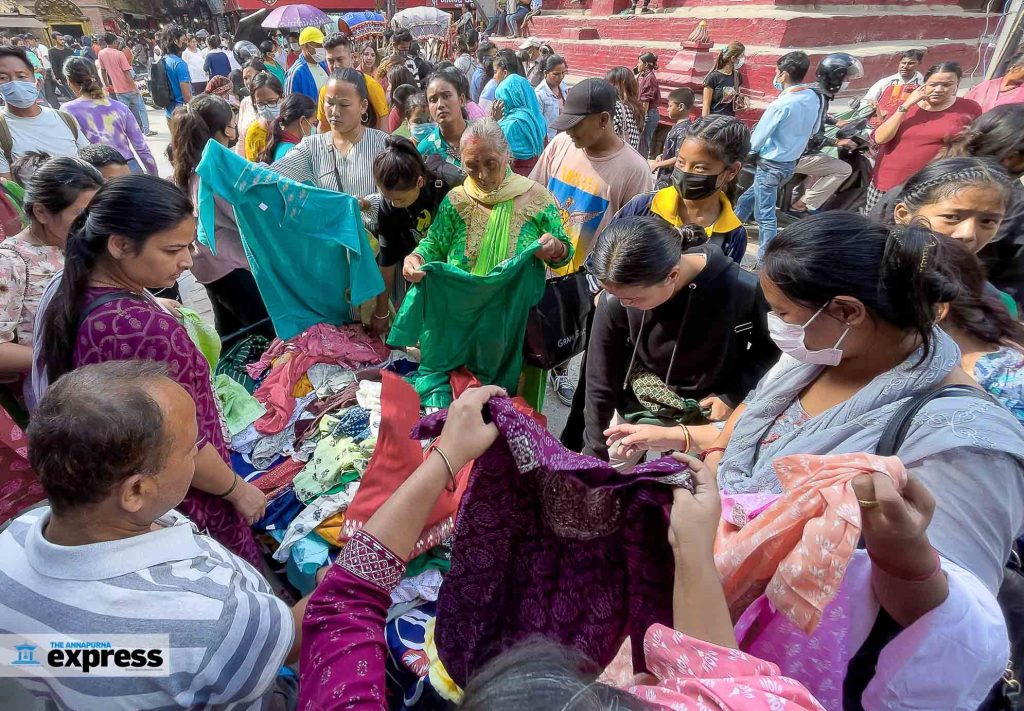 But for most Nepalis, Dashain is more than just its religious symbolism. It is also about family reunion. People living in city areas for job or study head to their hometowns to be with their loved ones.
But for most Nepalis, Dashain is more than just its religious symbolism. It is also about family reunion. People living in city areas for job or study head to their hometowns to be with their loved ones. 